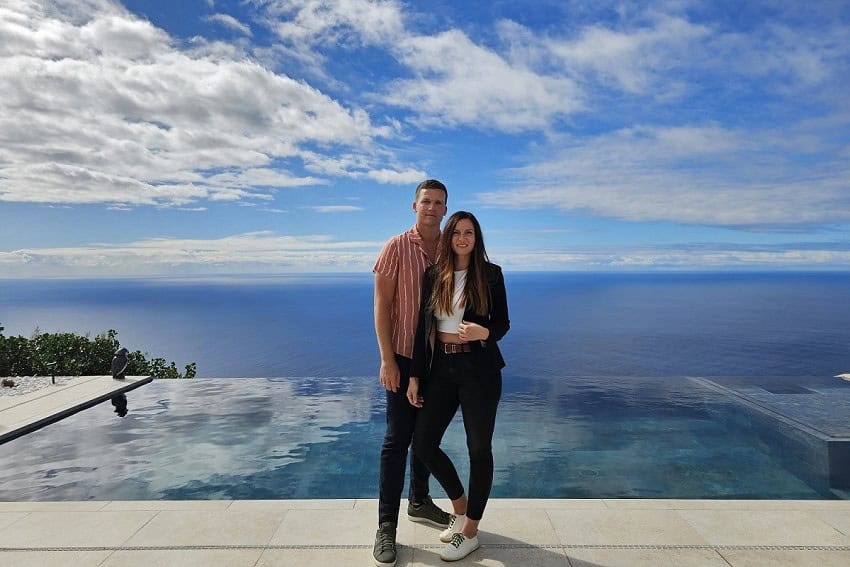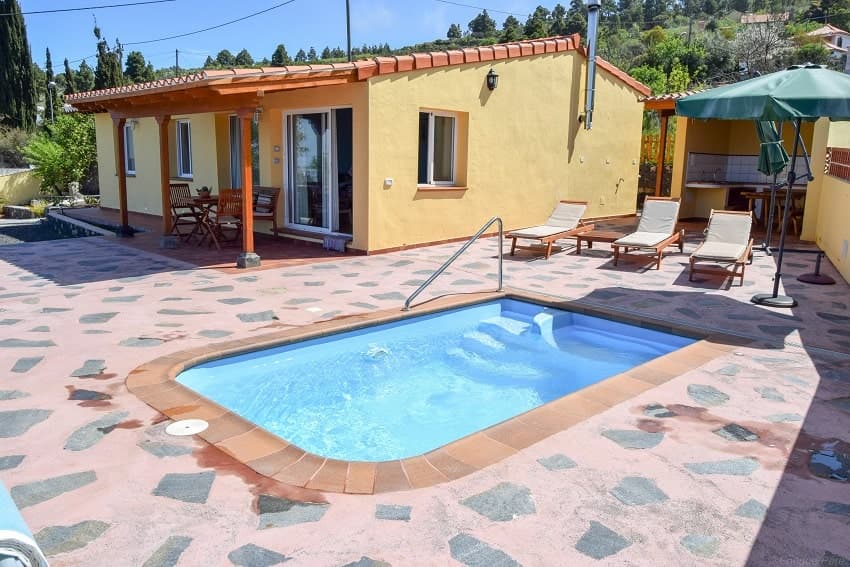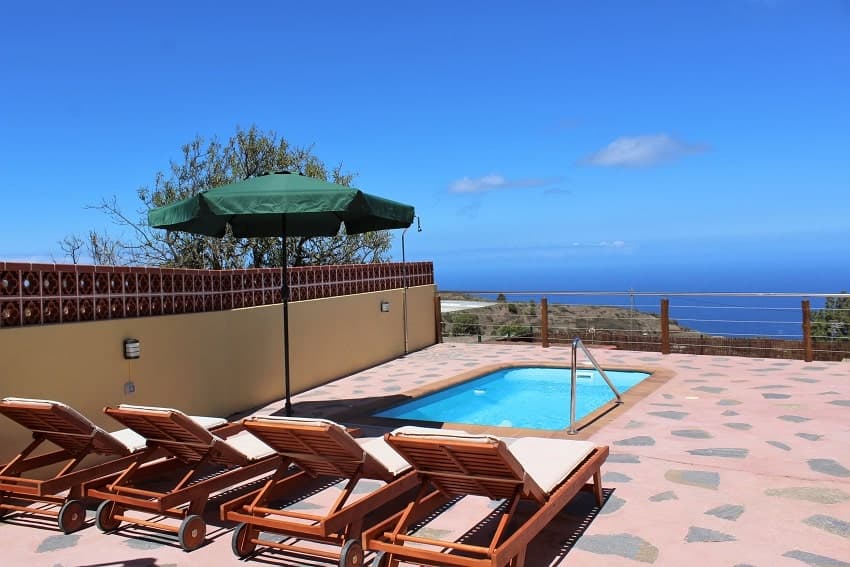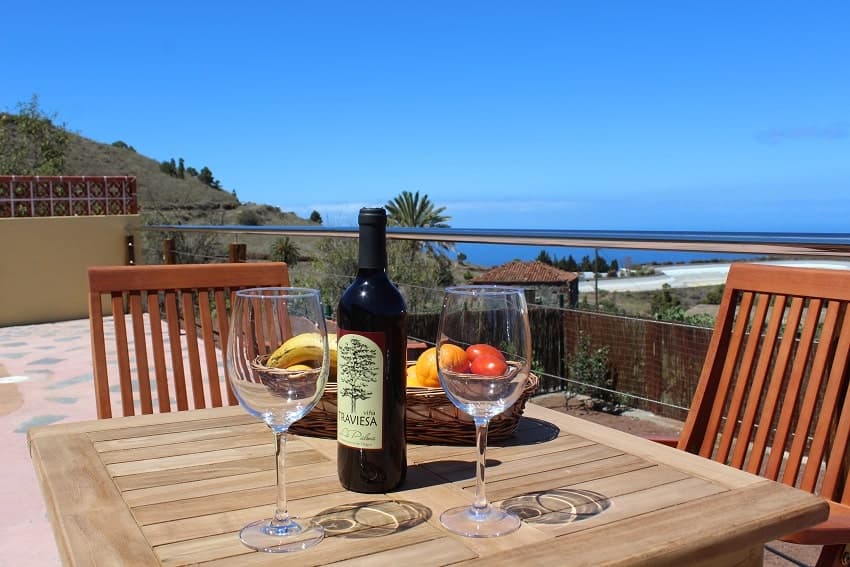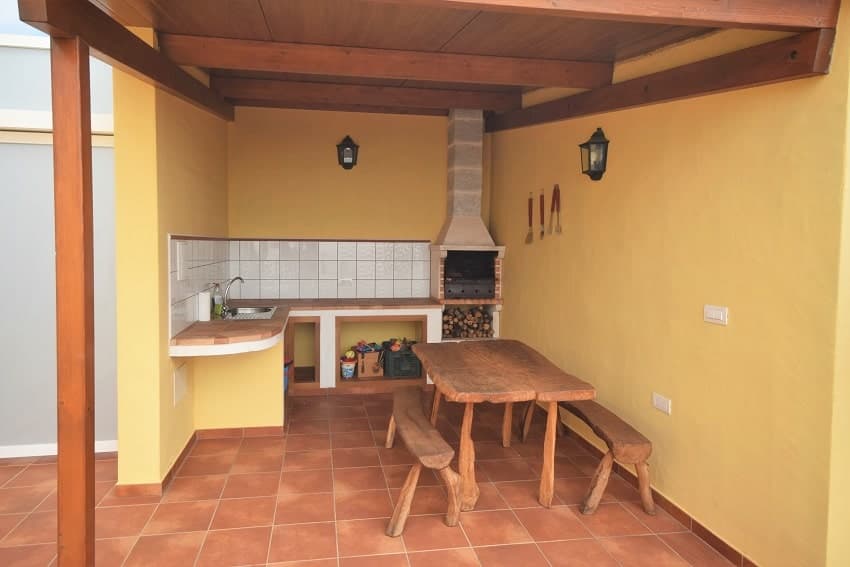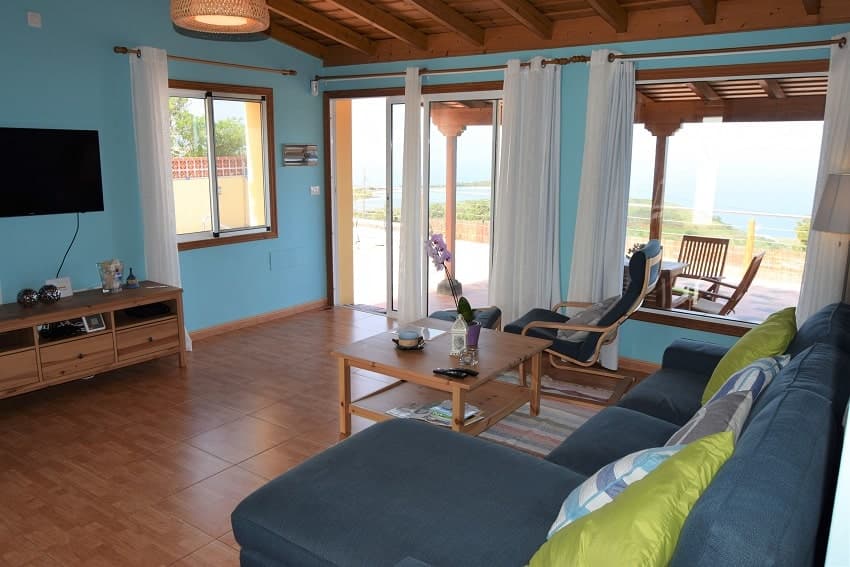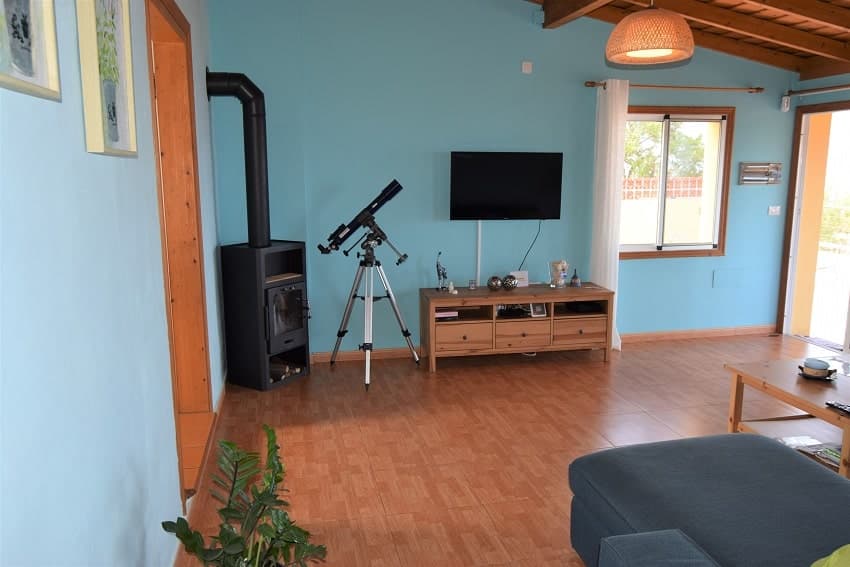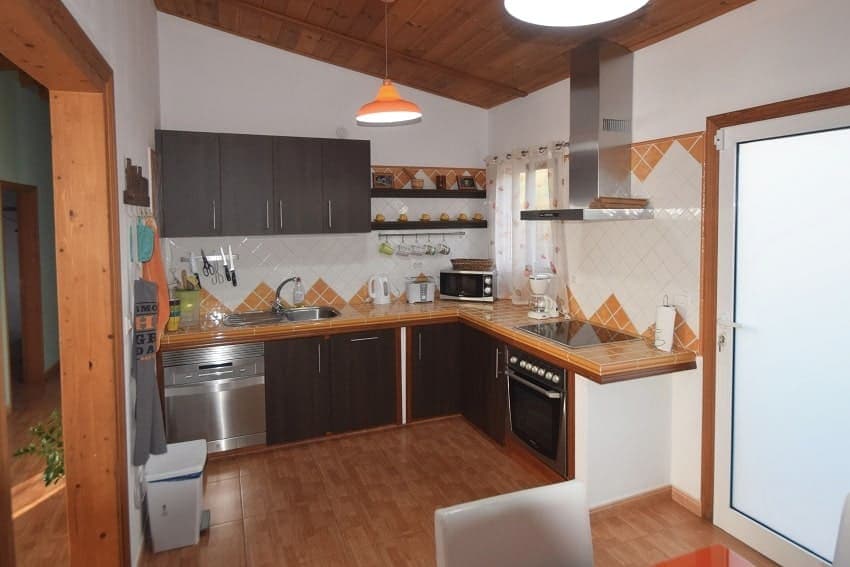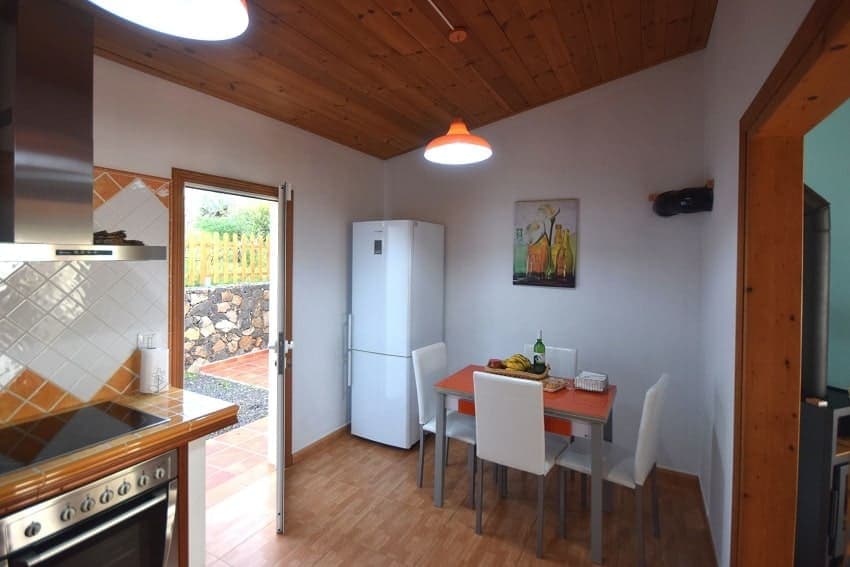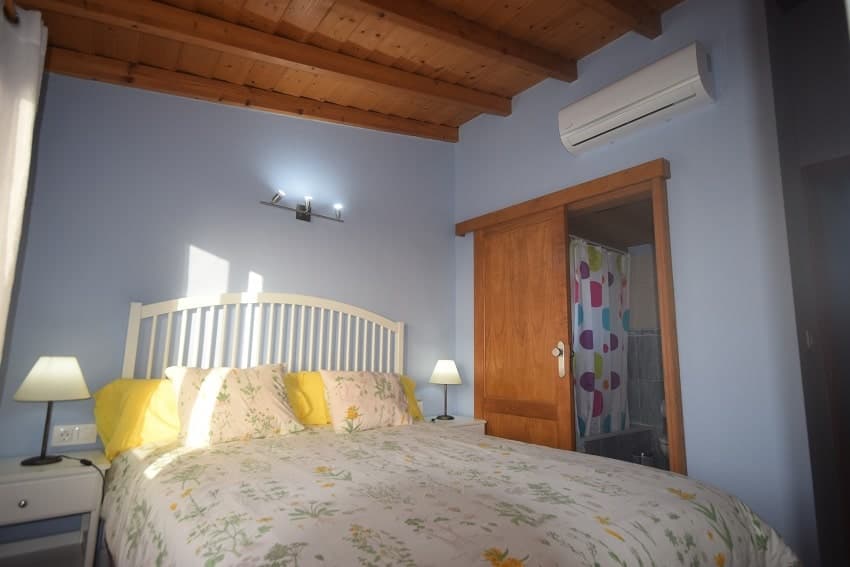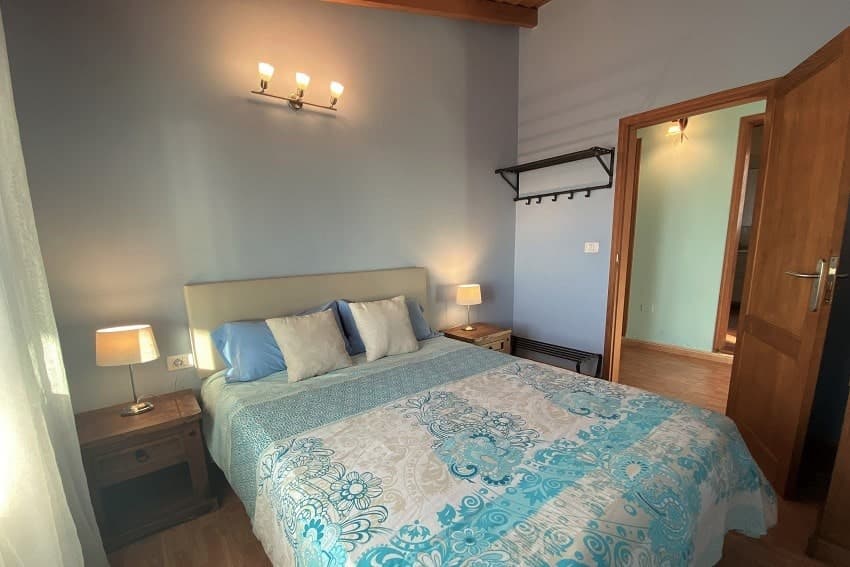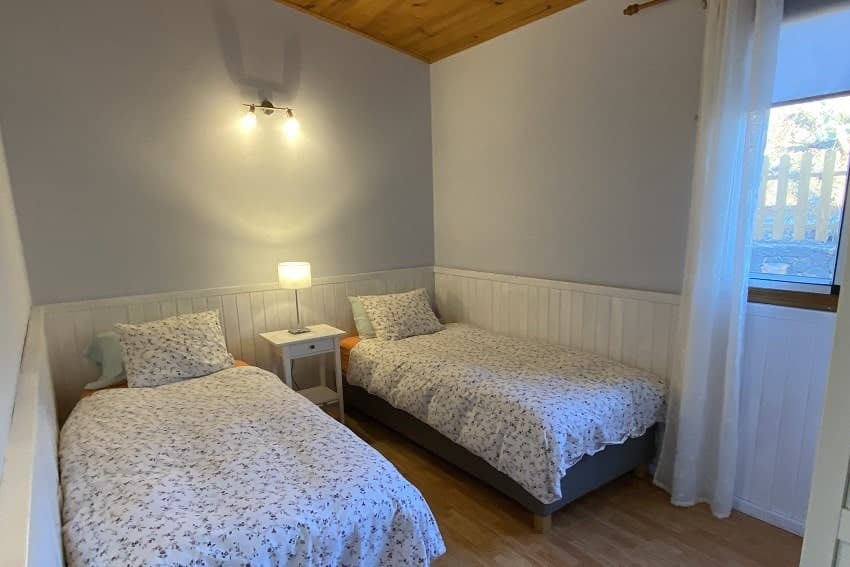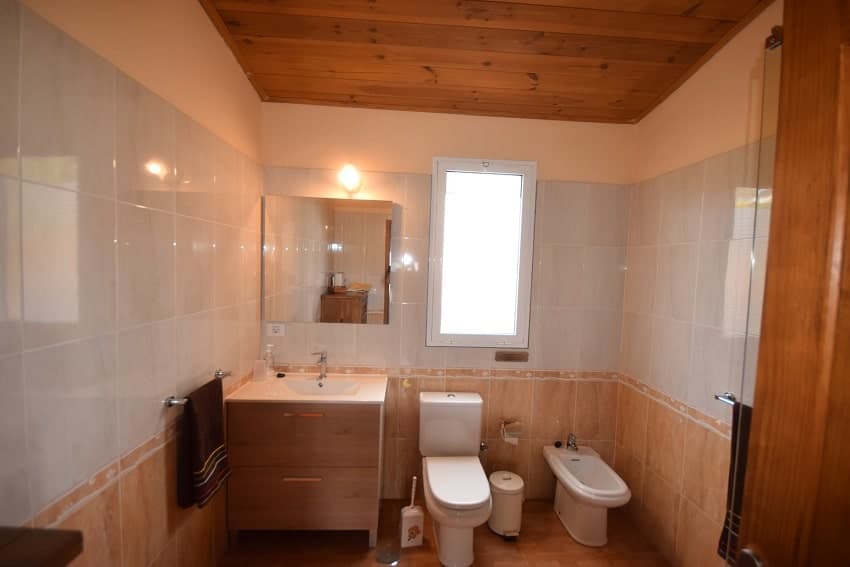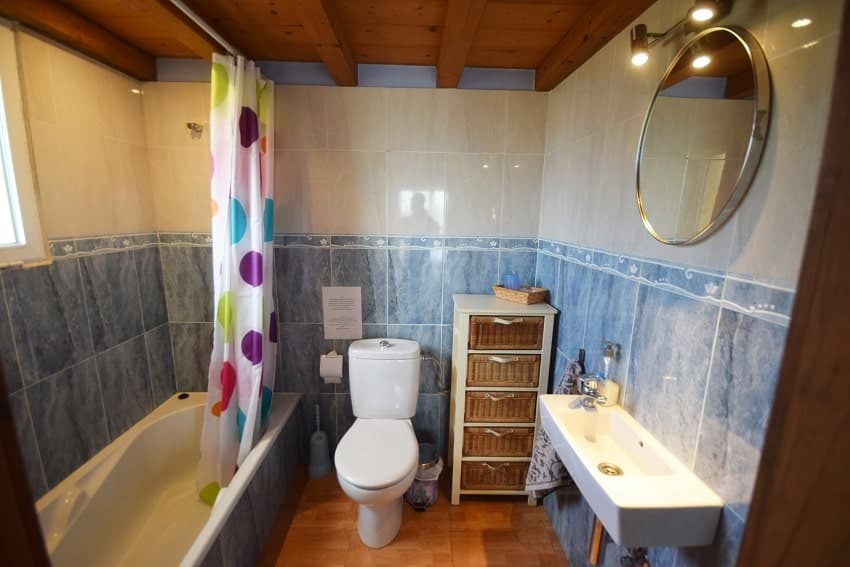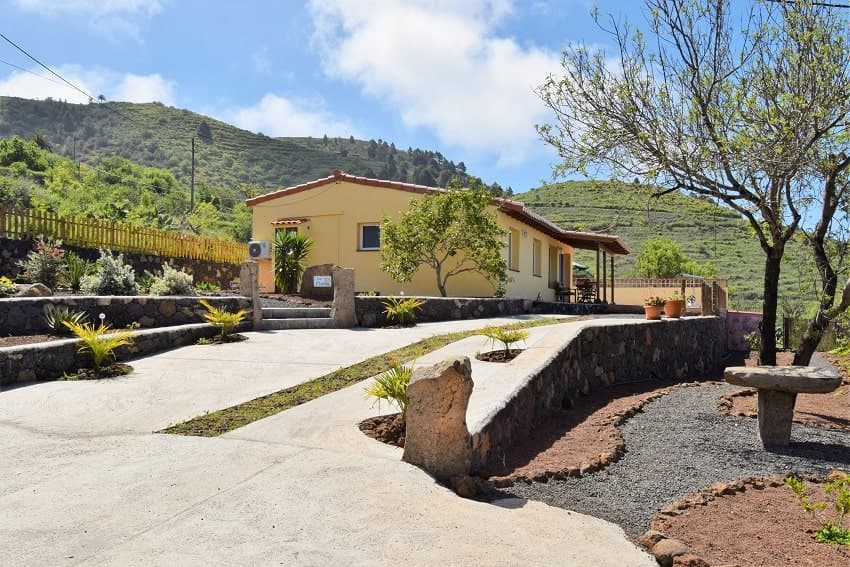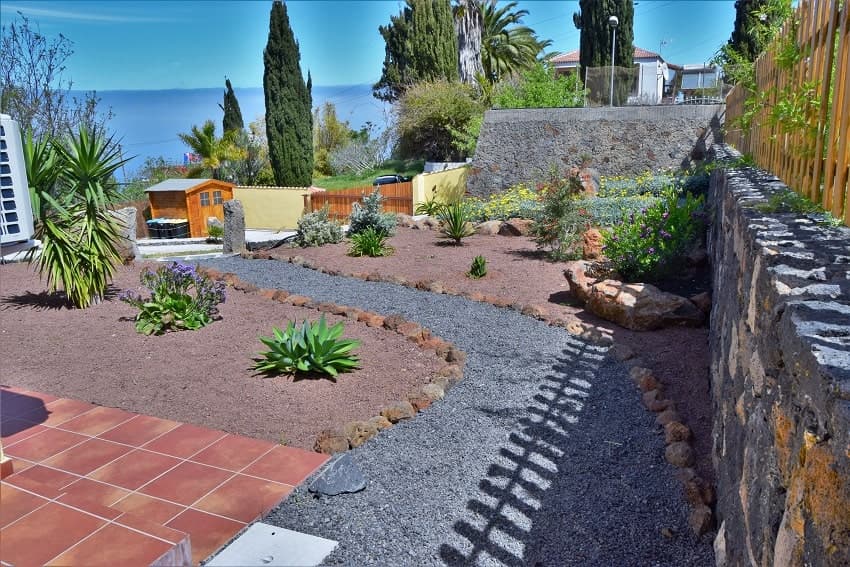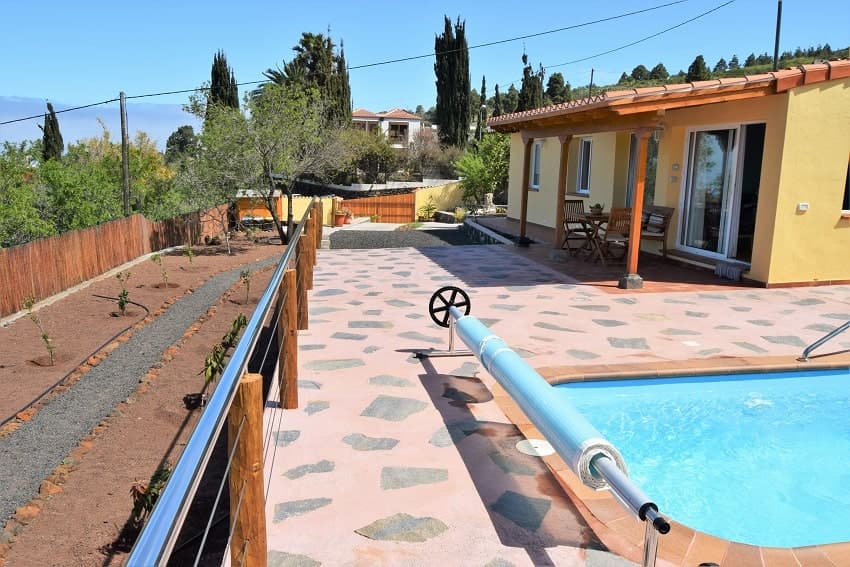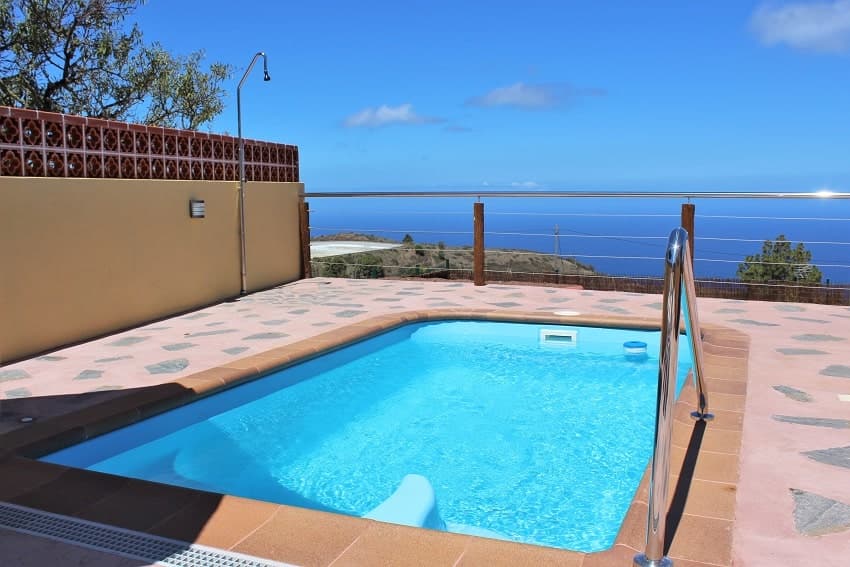Availability
Casa Florita
 1
1  3 2
3 2 






Casa Florita is an idyllically located holiday home in Puntagorda, in the northwest of the island of La Palma – It comes equipped with a small private pool, a barbecue and a fantastic view of the deep blue Atlantic Ocean.
Walking from the well-equipped living area, with its own fireplace to keep you cosy on cooler evenings, you arrive at the fully equipped kitchen, which makes cooking a delight.
You can also find three bedrooms and two bathrooms. A spacious double bed can be found in two of the bedrooms, one of which comes with a luxurious en-suite bathroom. Two single beds furnish the third bedroom.
You’ll notice a bright and cosy ambience in the house, as subtle but colourful tones adorn the walls and furnishings throughout.
Meanwhile, stepping out of the house takes you onto a partially covered terrace, where you can enjoy the small private pool, sun loungers and even a well-equipped barbecue for evenings in with your family or friends.
Looking out over the garden, you’ll find that the small but well-tended space is home to plants and fruit trees that are typical of the region.
Facilities
- 1 Bathroom
- 1 Bathroom En-Suite
- 1 Outdoor Shower
- 3 Double Bedrooms
- Air Condition Cold / Warm
- Alarm System
- Baby Cot
- Barbecue
- Bathtub
- Bed Linen & Towels are Provided
- Bidet
- Chimney
- Coffee Maker
- Covered Terrace
- Dishwasher
- Electric Kettle
- Fridge / Freezer
- Garden
- Hair Dryer
- High Chair
- Internet - WiFi
- Iron
- Kitchen with Integrated Dining Room
- Living Room
- Microwave
- Outdoor Furniture
- Oven
- Parking Space
- Private Swimming Pool
- Salt Water Pool
- SAT-TV
- Shower
- Sofa
- Stove
- Sun Umbrellas
- Sunbeds
- Telescope
- Terrace
- Toaster
- Washing Machine
Internet
Location and Distances
Medical help
Check In / Check Out
Payment / Cancellation
Additional information
Accommodation review scores and score breakdown
Based on 2 reviews
Guest reviews are written by customers after their stay at Casa Florita.
Guest reviews
-
08.08.2025
Fuimos dos parejas y desde el principio Flori y su marido fueron super atentos con nosotros.Nuestra estancia en la casa ha sido buenísima,la casa estaba muy limpia con todo lujo de detalles y cositas de su huerta.Los atardeceres espectaculares en su piscina y la tranquilidad que se respira en la zona te hace desconectar.Estamos muy agradecidos y la recomendamos totalmente.Todo perfecto!
-
22.04.2025
Sehr netter Kontakt zu Flori und Ihrem Mann. Zur Begrüßung gab es eine Flasche Wein und Mojo Soße (sehr lecker) von Ihrem Mann, sowie Bananen und Avocados und Tomaten aus eigenem Anbau. Auch während der 2 Wochen wurden wir regelmäßig mit Obst und auch Holz für den Kamin und Grill versorgt. Das Haus liegt sehr ruhig und hat eine tolle Aussicht auf den Atlantik. Die Wanderwege beginnen direkt hinter dem Haus. Den Kamin haben wir auf Grund der doch recht niedrigeren Temperaturen fast jeden Abend genutzt.
La Palma
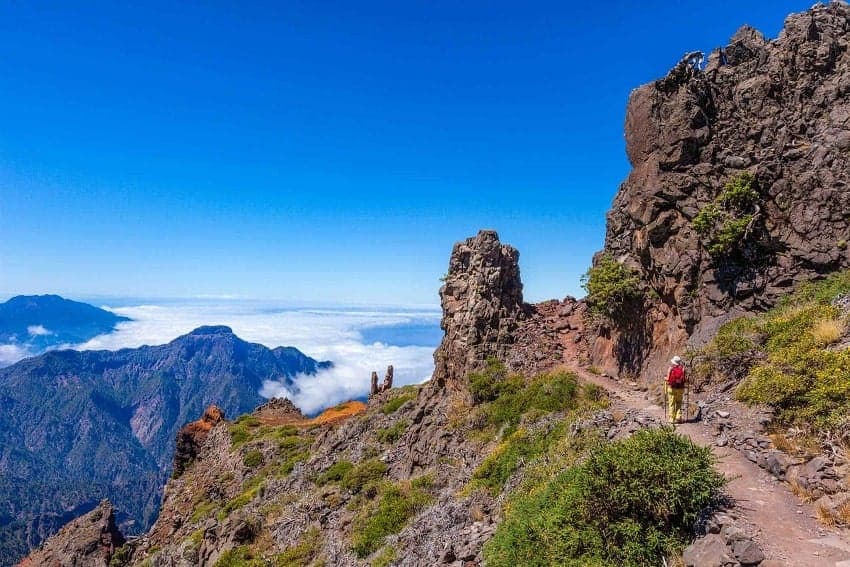
The island of La Palma offers breathtaking landscapes, remote beaches, imposing volcanoes, dense forests and incomparably starry skies.
With its 708 square kilometres, an elevation of 2.426m and its shape of a heart it is the most Western island of the Canary Island chain. Like every island in this archipelago, La Palma was created by volcanic activity. It is one of the youngest of the seven islands, dating back some 1.7 million years. The volcanic origin of La Palma is still clearly recognizable today, especially the southern part of the island with the dormant volcano Teneguía which last erupted in 1971, and offers interesting insights into its geological past.
The year-round mild climate with average temperatures between 18 and 27 degrees Celsius produce spring-summerlike weather as a result of the northeast trade winds.
This weather phenomenon is responsible for a pleasant subtropical climate and a rich green vegetation that prevails because of the humidity carried along in the trade winds. These moisture rich winds at certain times of the year also create a spectacular waterfall of clouds cascading down the central mountain faces and hence the nicknames Isla Verde – Green Island and Isla Bonita – Beautiful Island.
The unique geological structure of the island with its variety of vegetation zones and microclimates that are rarely found in the world on such a small area make this island a miniature universe. Each area of the island varies completely from another. In 1983 La Palma was declared a UNESCO biosphere reserve.
Another special feature of La Palma is the unique night sky. Due to its location in the Atlantic Ocean, sparse population, minimum light pollution and highest mountain peak Roque de los Muchachos 2.426m, the island was chosen as the location for one of the largest and modern observatories in the world.
The official population of the island is approximately 80,000 people. Traditional festivals such as the Bajada de la Virgen or Los Indianos carnival, famous far beyond the island’s borders, bear witness to the zest for life of the local people (Palmeros). Not only the geographical location, but also the numerous immigrants from Central and South America show a variety of Hispanic influences in island life, cuisine and cultural.
Read more...

